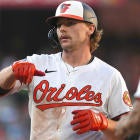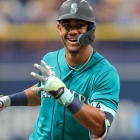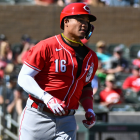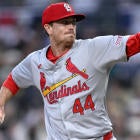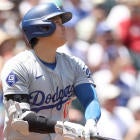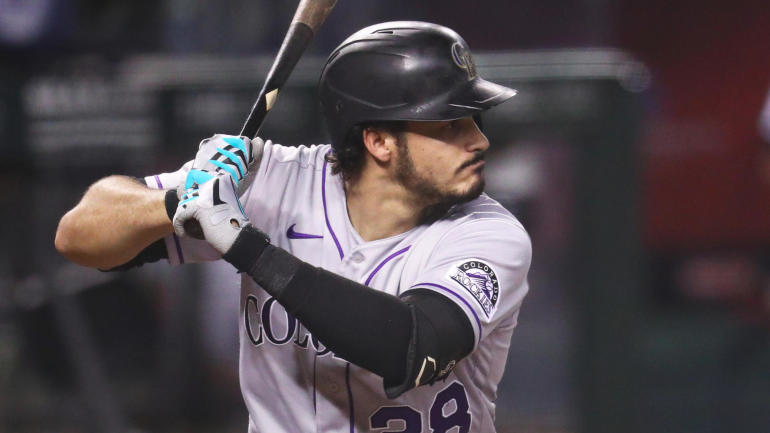
After a weekend of watching and waiting, Nolan Arenado to the Cardinals became a reality Monday.
It means one of the most bankable studs of the past five years -- a first-round lock until this year, averaging 39.8 homers and 124.2 RBI from 2015 through 2019 -- has a new home. And since that home isn't Colorado, the land of eternal offense, it raises some questions.
The complicating factor for Arenado is that his draft stock had already slipped prior to this deal. Normally a first-rounder, he has been going in the third round on average after a disappointing 2020 in which he played through some soreness in his shoulder.
| ||||||||||||
So confidence in him was already shaken even before word came down that he'd be leaving the safe haven of Coors Field, a venue known for making kings out of court jesters. What happens to Arenado, then, when he leaves? Over his career, he has hit .322 with a .985 OPS at Coors Field vs. .263 with a .793 OPS everywhere else.
Of course, it's a mistake to presume he defaults to the "everywhere else" now. Few players achieve perfect balance between their home and away splits, and for Rockies players specifically, there can be a hangover effect when they first hit the road after a stint in their distorted home environment. So when they leave behind the thin air for good and join another team, their splits tend to level off. It doesn't mean they turn out to be just as good as when they played in the most favorable of hitting environments -- not always, anyway -- but they're always better than the road version of their Rockies selves.
A recent example is DJ LeMahieu, who had most of us fearing the worst when he left the Rockies for the Yankees two years ago. Now, we only wish he had left sooner. Perhaps the most fitting historical example is Matt Holliday, who was similar in stature to Arenado before leaving Colorado. He hit .319 with a .938 OPS in five seasons there before hitting .304 with an .899 OPS in the five seasons that followed.
The majority of that second five-year stint Holliday spent with -- you guessed it -- the Cardinals.
My official projection for Nolan Arenado in 2021. pic.twitter.com/VVfYZqSqBC
— Chris Paul Towers (@CTowersCBS) January 30, 2021
Maybe Arenado's transition goes that smoothly. Maybe any concerns about him leaving Colorado are entirely overblown. But I keep coming back to his 2020 season and the fact we had already downgraded him. Why was that? Is it because we can't be sure the shoulder was entirely to blame for his struggles? Is it because we can't be sure he's entirely past it? I was willing to give him a pass and enjoy the third-round discount, but that's when I presumed he'd still be playing in Colorado. Now that he's not, it would seem an additional downgrade is in order.
Basically, I still want to feel like I'm enjoying a discount when I pick Arenado, given the uncertainties, and the middle of the third round no longer does it for me. I'll drop him behind Anthony Rendon, who I already considered his near equal, but also Rafael Devers, who has shown similar upside in the past and at this point has fewer question marks. But yeah, if Arenado is still there in the 45-50 range, I will select him with gusto.
We talk through the implications of the Arenado trade and Eddie Rosario's signing with Cleveland on the Fantasy Baseball Today podcast embedded below. Subscribe at Apple, Spotify or anywhere else you get your podcasts for more of our comprehensive draft prep coverage:
As for those who benefit from his departure and now get to reap the benefits of Coors Field, it's hard to say exactly what the Rockies will do given the options they have. Trevor Story is locked in at shortstop, but they were already less than settled at every other infield spot. Ryan McMahon will presumably play one of them. My guess is first base, which would leave second base to Garrett Hampson if the Rockies are interested in giving him a more regular role.
Former top prospect Brendan Rodgers could instead play second base or take Arenado's spot at third, and he would be the quintessential post-hype sleeper after losing some luster because of his own shoulder issues the past two years. In 143 at-bats at Triple-A Albuquerque back in 2019, before those troubles began, Rodgers hit .350 with nine homers and a 1.035 OPS.
Stock up, then, for Rodgers, who officially becomes mixed league-viable, and stock slightly up for Hampson, who remains intriguing as long as he's still stealing bases and still calls Coors Field his home.











